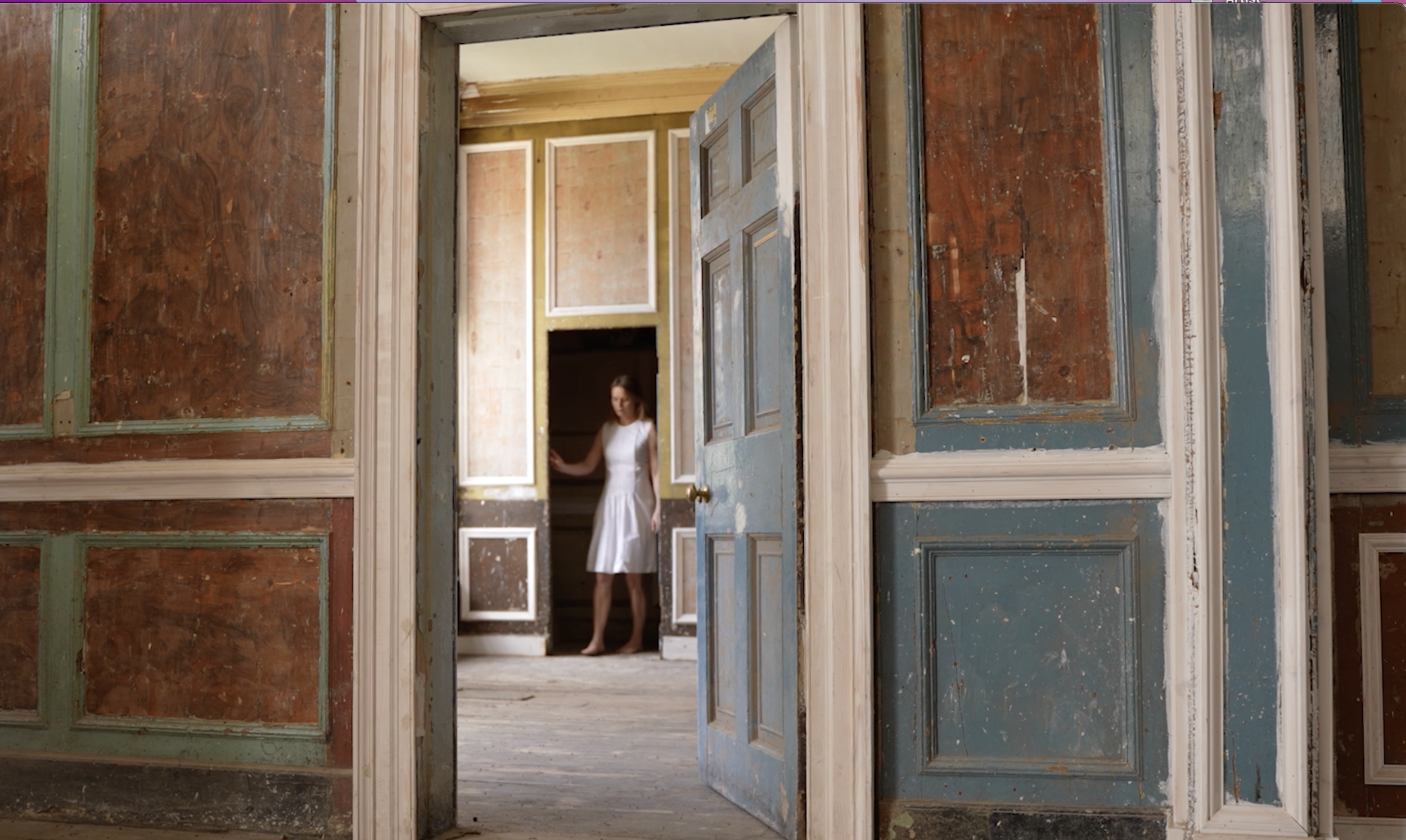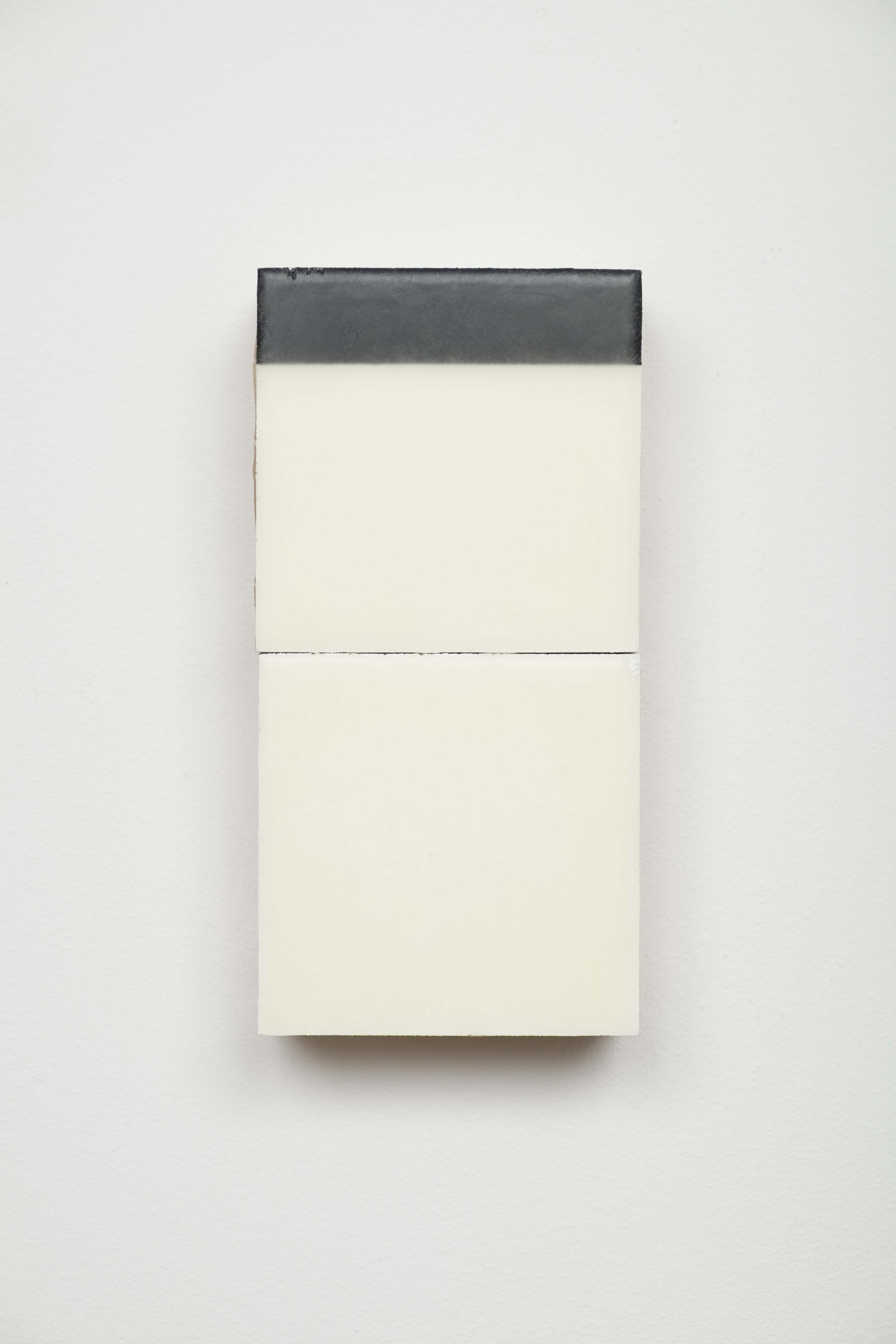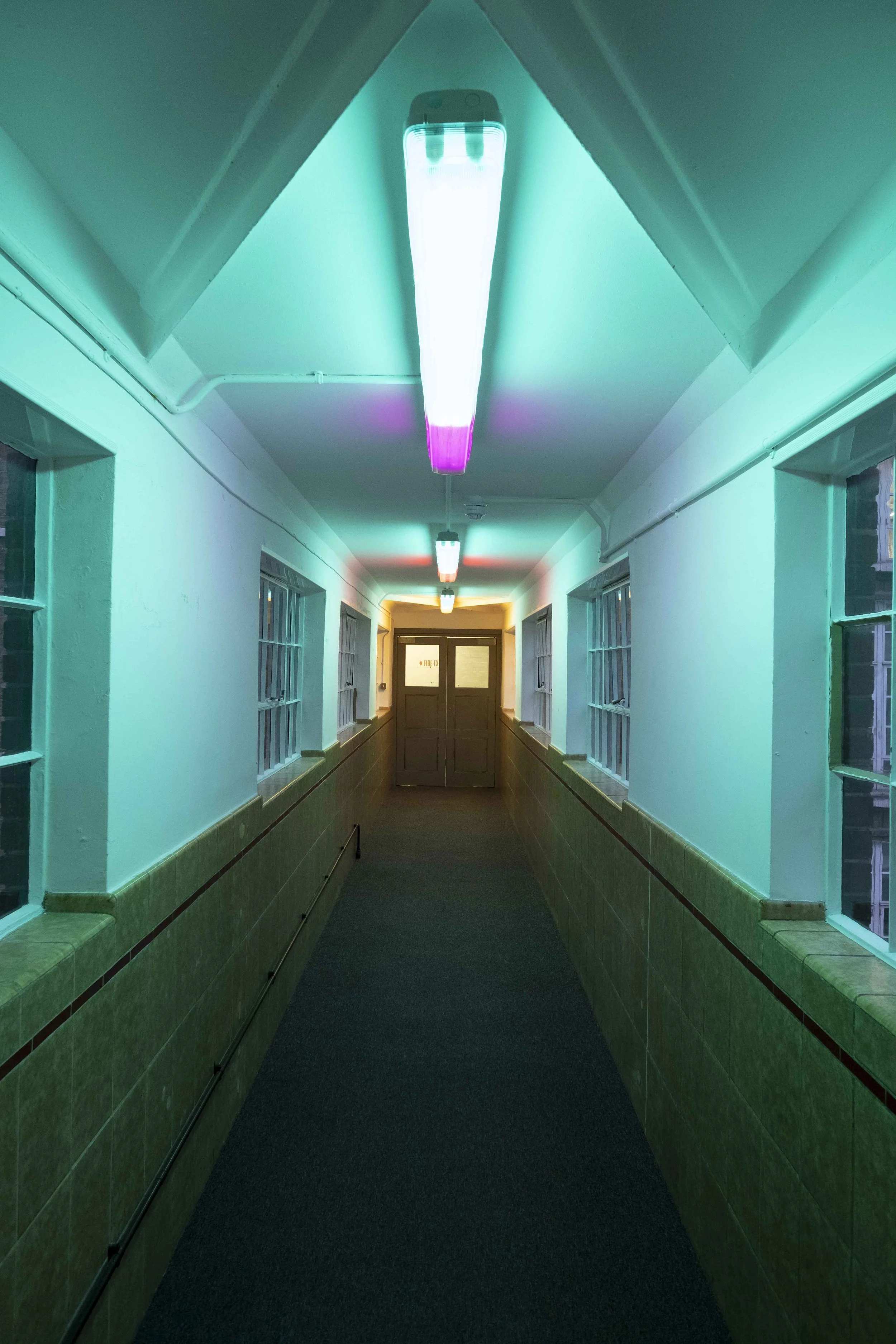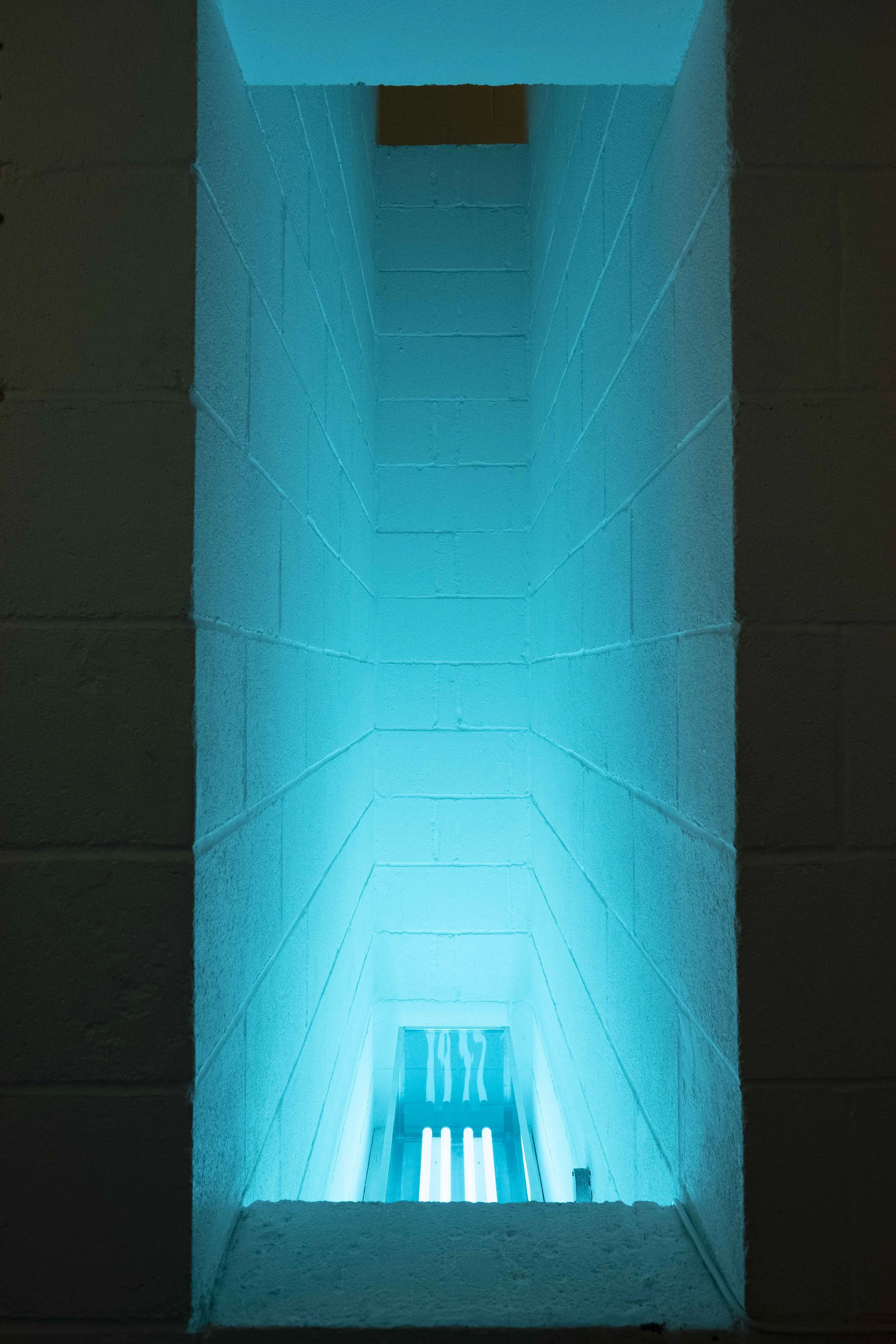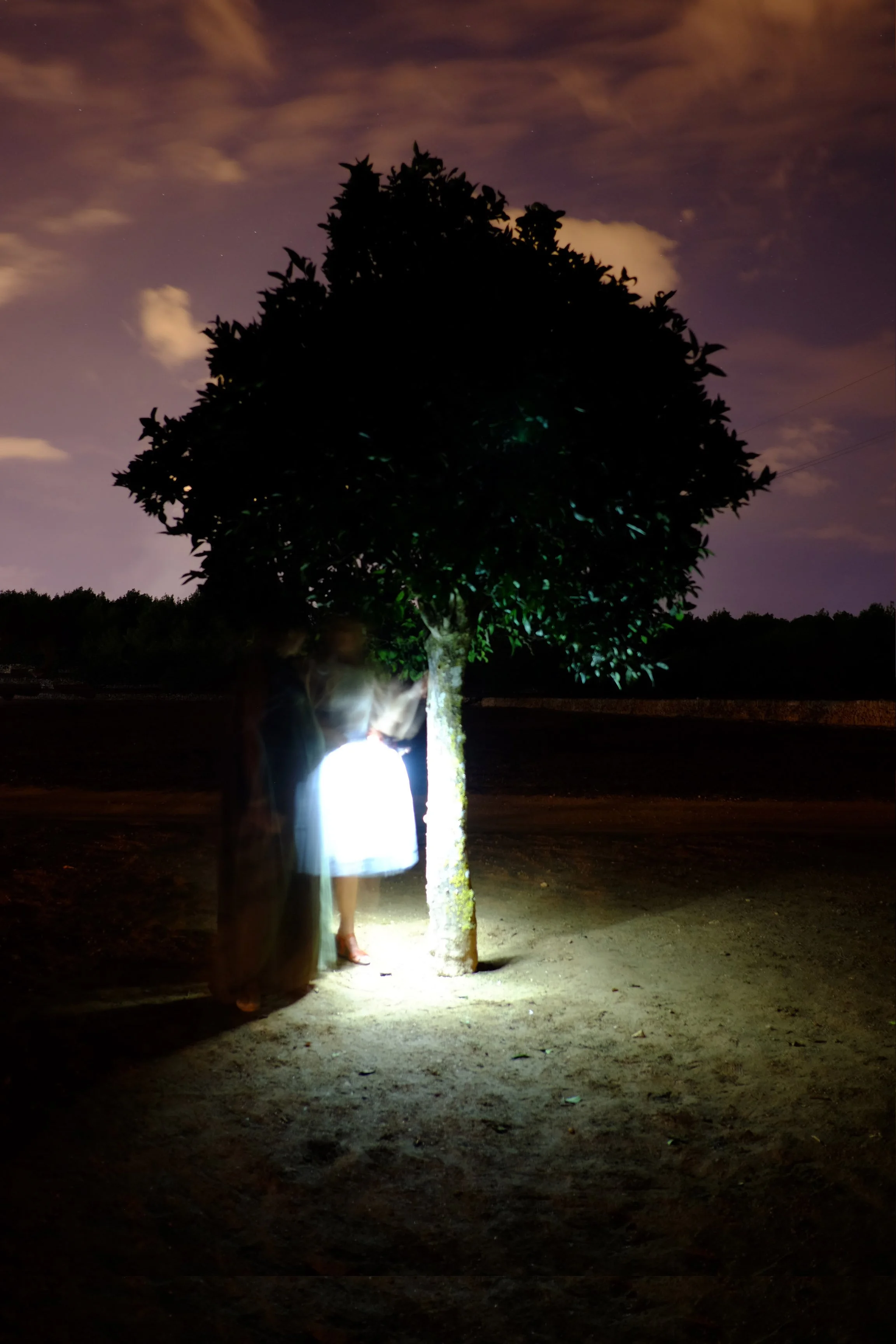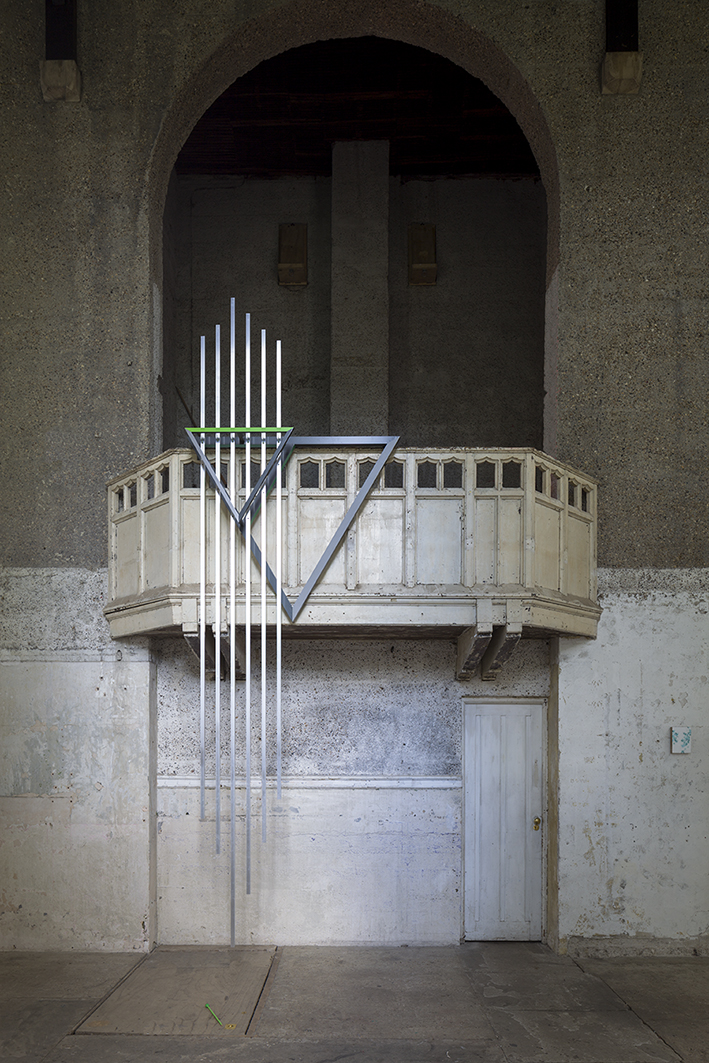Isha Bøhling
That house on Mare Street
Artist In Residence Exhibition
195 Mare Street. Hackney. London. September 2023
That House on Mare Street. 2023 ( Film Still ) Video and music written and performed by Isha Bøhling.
Silence 2002
‘Beethoven Moves’ KunstHistorische Museum. Wien. 2020
Hatje Cantz Exhibition Catalogue. Vienna Art History Museum
Beethoven Moves is an exhibition catalogue accompanying an exhibition of modern and contemporary art at he Vienna Art History museum, to mark the 250 Year Centenary of Ludvig Von Beethoven.
This book is seen by the curators as an extension of the exhibition reflecting the life and work of Beethoven through the lens of art and culture of modern and contemporary art.
Isha Bohling is featured artist with her ongoing Silence series and contributing text in this book alongside major modern and contemporary artists; including Beethoven, Rebecca Horn, Oliasson, Baldessari, Rauschenberg, Beuys, Casper David Friedrich, Goya, Turner, Anselm Kiefer, Cy Twombly, L.S Lowry, Whistler, Vija Celmins, Idris Khan, Katie Paterson, Basquiat, Ernst Schwitters, Voigt, Tino Seghal.
Edited by curators Stefan Weppelman, Andreas Zimmerman, Andreas Kugler and Jasper Sharp. 2020
Isha Bøhling
Neither Here Nor There Open Field Artist in Residence Exhibition
Cass school of Art, Architecture & Design. London Metropolitan University.
Neither Here Nor There is the outcome of Isha Bøhling’s Open Field residence in the Fine Art dept at the Sir John Cass School of Art, Architecture and Design at London Metropolitan University. The site-specific light and sound work is installed in the bridge link which functions as a walk way that links two amain buildings.
The light installation creates a mutable sequence of colour alignments that is affected by natural light coming through the windows. Weather patterns brings different light from dawn to dusk. Up close the coloured light appears distorted, reflected and refracted, while a more distant, external view from the street presents a more settled and defined pattern. As darkness falls, the lights grow in intensity, their vibrant colours banishing the gloom.
A series of voices are heard, as if calling from one side to the other. The artist uses her voice through repetitive layering to culminate in a melodic song. The lyrics of the song play with the idea of not being in any one place at any given time, responding to the transitional nature of the space; the spectator’s position is always liminal, in- between locations.
Also on view is Bøhling’s installation Behind These walls, the result of her Sonic arts residency in Music Technology at the same institution. Behind these walls is a light and sound installation, presented in The Wash Houses’ stairwell. The artist’s voice is heard singing, inviting the viewer to walk up the stairs. A large light box projects light from the bottom of the lightwell while a skylight above allows natural daylight to penetrate down the shaft. Existing wall lamps placed at regular intervals up the stairwell are worked into the choreography and have the appearance of floating moons The lyrics of the song respond to the building’s former use as a wash house and the lost rivers bricked up underground.
The artist looks for meanings behind patterns in the systems that we create in an attempt to understand the bigger picture of our world and our universe. The songs allude to questions about time and space while blurring between fictional and real narratives.
Isha Bøhling is a British Danish artist based in London. She has exhibited extensively both nationally and internationally, including The London Open, Whitechapel Gallery, David Risley Gallery Copenhagen; Dilston Grove, London; Kunstraum Baden, Zurich; Pierogi gallery, New York; The Soap Factory, Minneapolis; The Recoleta Museum, Buenos Aires; Rua Sympatica, São Paulo. She was shortlisted for East London Painting Prize in 2014 and was in the Gwanju Bienale, South Korea. Isha graduated from an MA in Fine Arts at St Martins in 2002.
Bøhling is on Bad Punk: Resonance Fm 104.4FM The Singing object. 10/05/19 More info www.ishabohling.com
Isha Bøhling
Behind These Walls
The Washouses. Opens May 1st 2019
The Cass, London Metropolitan School of Art, Design and Architecture. London.
Isha Bøhling, is an artist in residence on the Sonic Arts residency in Music technology, a pilot at the school of communication and digital media, at London Metropolitan university. The works created during her residency has culminated in exhibitions including site specific light and sound installations and live performances.
‘Behind these walls’ is a light and sound installation, installed in the washhouse stair well. The artists voice is heard singing inviting the viewer to walk up the stairs. Lights comes from the centre of the stairwell shining up while a natural skylight shines down. The existing wall lights join in the narrative, looking a little like moons. The lyrics of the song respond to the buildings former use as a washhouse and the lost rivers bricked up underground.
Also on view is Bøhling’s ‘Neither here nor there’ the result of Open Field residency at Cass Fine Art. This light and sound installation is installed in the bridge link which functions as a walkway that connects two university buildings. Here the artist responds to the transitional nature of the space. You are both in a separate space yet also in two different places at the same time. A series of voices are heard, as if calling from one side of the building to another across the way. Light travels through the windows and up close inside the bridge link the coloured light is distorted and reflected around the space. From outside at a distance it gets more intense as darkness falls.
The artist looks for meanings behind patterns in the systems that we create in an attempt to understand the patterns and systems of the ‘bigger picture’ That of our world and our universe. The songs allude to these questions while blurring fictional or real narratives.
Isha Bøhling Open Field AIR
Exhibition PV Thursday 8/11/18
The Small Annexe. Art Department. School of Art Architecture & Design.
Old Castle Street. London E1 7NT. London Metropiltan University
Open mon- fri 12-6pm. 8/11-18/11/2018
‘Prime’ Powder Coated Aluminium
In The Orange Tree. 2016
Ses Dotze Naus. Edicion Zero. Ibiza. Spain
A light and soundwork installation created at the residency Ses Dotze Naus, Ibiza, Spain. The art work responds to the lost art of ‘Redoblat’ a style of singing unique to the Island.
The London Open 2015 at the Whitechapel Gallery
catalogue text by Daniel F Herrmann
Isha Bøhling's abstract compositions bridge the gap between depth and surface. On the one hand, they constitute carefully executed panel painting in acrylic, making use of elaborate patterns and arrangements of colours and hues. On the other hand, they use the application of translucent layers of wax to achieve a staggering amount of volume and richness. The result is a testament to time, attention to detail, and a jewel like beauty that is hard to imagine in any other medium.
Bøhling's process begins with the design of a pattern, a spread of shapes that develops and changes as it spans the surface of her small scale panels. In art history, such generative iteration of geometric drawing is often connected to an artist's interest in concepts of modularity, in the elimination of traditional traces of the maker or in an opposition to concepts of individual authorship. Bøhling's concerns are different. Her patterns develop with deliberately introduced imperfections and changes that bring about variation rather than repetition. Instead of eliminating traces of any human hand, they are dependent on them, flowering and blooming to full beauty when encountering slight modifications and undergoing chance mutations.
Geometric abstraction is often perceived as stark or austere. Bøhling's use of diaphanous wax as a final coat for her paintings only emphasises the warm and delicate quality of her work. Despite their abundant use of facets and angles, her panels depict the organic more so than the crystalline.
Daniel F Hermann. 2015
Curator Whitechapel Gallery, London
For more information please visit the Whitechapel Gallery site here
Between Thought and Space Dilston Grove, London
A review by Manjinder Sidhu, June 14 2015, a-n.co.uk
Countering Venice Biennale’s narcissistic tone this humble show, set in a deconsecrated Italianate chapel (Dilston Grove), works on you like a transcendental Indian raag; quietly seeping into your whole being.
Between Thought and Space is a live interdisciplinary site-research project spanning September 2014-December 2016, involving 12 practitioners collectively exploring the social, material and historic fabric of Dilston Grove, a Grade-II listed building set on the edge of Southwark Park. The first church on this site, a ‘spiritually destitute district’, was opened in 1886 by Clare College Cambridge as part of a university mission. The Bermondsey Artists’ Group rescued the space in 1999 and the raw nature of the cavernous space proved to be ideal for installations, performances, large-scale video projections and other experimental projects. By 2008 the building had decayed beyond repair but was refurbished in 2010.
Echoing throughout this austere concrete structure is Isha Bøhling and Ian Monroe’s penetrating sound installation. Based on mathematical ratios of the church’s architecture, a sonic rising and falling away is ever-present, without being obtrusive or blocking other ‘voices’ in the show. Over time you become aware of silent pauses, which somehow re-frame the space, revealing the beauty of site imperfections alongside a determined resilience: rust-scarred walls bearing traces of past structures; window-grids, distorted – behaving as if set free in spring. In Prime, steel angular rods of varying lengths descend from a redundant pulpit, like organ pipes in a musical scale. Positioned nearby is a fluorescent-orange baton: a live invitation to play, to connect, to be in relationship to, to personally transform the experience for self and others. This sense of call-and-response, of receptivity, of conversations to-ing and fro-ing between works, implies a democratic sensibility that’s repeatedly felt throughout the show: a testament, perhaps, to the project’s collective approach. With tenderness, you are held in the space.
In bold contrast, Ian Monroe’s 63mm, a sharp-edged archeological ‘slice of office life’ bisects the central area, where the congregation might have once sat. Using fragments salvaged from Canary Wharf, this 63mm-wide transect of familiar readymades (phones, computer monitors, filing cabinets, lighting fixtures, carpet tiles) speaks with Vorticist passion of commerce, financial markets, globalisation and speed: 63 mm is the distance the shortest possible trade signal travels at the speed of light. Close-by, Shin Egashira’s discordant yet related everyday chairs sit patiently in limbo – a liminal space of inbetween-ness: connected but not quite communicating.
Beyond language, spending time in this show is a poetic experience; a lived understanding of thought and space.
Manjinder Sidhu, June 7th 2015. For a link to the article please click a-n.co.uk
Double Vision, Lion and Lamb Gallery, London
review by Adam Walker, Abstract Critical, July 14, 2012
Divider 2012. Isha Bøhling. Mixed media on wood 30X20CM.
As eluded to in the title, this exhibition of contemporary abstract painting sets out to explore a series of binary oppositions: figure and field, surface and depth, chance and system, symmetry and asymmetry.
While these are well travelled avenues of exploration, the quality of the works on display makes revisiting them worthwhile. For in this surprising setting at the back of a pub are some beautiful paintings.
Isha Bøhlings Divider appears to encapsulate a means of composition based on a system being devised and followed through. The Morphing diamond motifs work almost like fractals. But that 'almost' brings a vital ambiguity to it: in certain sections the system seems to have been corrupted, and in these 'imperfections' the hand of the artist seeps back in.
Adam Walker, July 14th 2012. For a link to the full article please click Abstract Critical
Dig Down in Time, Man and Eve Gallery, London
two reviews by Ausra Linkeviciute and Olivia Nairn, published by MurmurArt 2010
For further information about Dig Down in Time click here
Review 1 – Ausra Linkeviciute
The archive might be the starting point for the seven artists presented in Dig Down in Time, but perhaps the strongest element which unites their work and overcomes the viewer is that of magic. Whether appropriating found imagery or creating an archive of their own, the artists forge new narratives moving from the real towards the metaphysical.
Susan Hiller has described her art as “investigations into the ‘unconscious’ of our culture” and this is exemplified by her work Dedicated to the Unknown Artists and the ensuing Addenda. The work stands as an acknowledgment of these uncredited artists as the anonymous postcards with views of the rough sea are recorded, classified and thus relocated into a new context. Similarly in her sound installation Moonlight, Isha Bohling is also making visible that which is unknown by delving into an archive of personal images and family history.
Archival imagery is boldly deconstructed in the compositions of Jorge De La Garza. His series of photographic collages are reminiscent of surreal dreamscapes as he juxtaposes the incongruous, the natural and the formal. Larissa Nowicki’s work consists of woven book pages representing religious imagery. But it is not the ‘content’ of these pages that grips the viewer, but the aesthetic experience of tracing the beautiful patterns and projecting a whole multitude of possible meanings.
Susan MacWilliam’s video piece Some Ghosts uncovers the vast archive of its protagonist, a poltergeist investigator Dr William G Roll. Even though we follow him as he goes through his newspaper clippings, books, charts and experiment records, the film is not so much an exploration of the paranormal as it is a personal portrait of a character, a record of his life. Some ghosts is thus an archive in itself. This idea of a poltergeist could easily be transported to a nearby projection of Pippa Gatty’s Tiangong Rendezvous. In this video installation scientific imagery is turned into something playful, something mystical, like an apparition.
A self proclaimed Geographer-at-Large Eames Demetrios proposes a completely different take on the notion of archive – the archive he uses is a fictional one, his own creation. For those unfamiliar with his work, this installation of two wooden plaques marking a fictional historical site is powerful and confusing enough to make you start exploring. The exploration will lead to Demetrios’ alternative universe of Kcymaerxthaere – with its own people, stories and physical laws.
Most of the works in Dig Down in Time could be viewed as if existing in some sort of alternative universe. The forgotten or overlooked social artefacts are resurrected to a new life – that which is unsettling and above all magical.
Review 2 – Olivia Nairn
Man&Eve is located in the former Lambeth Sea Cadets Drill Hall, an early 20th century building oozing with character and charm found at the end of a quaint street in Kennington, south London. A perfect place, therefore, for the setting of the gallery’s latest exhibition, Dig Down in Time, which explores the notion of the archive and the role of memory, records and other documentation in preserving our personal and social history. Featuring the work of seven artists, the exhibition is small yet uniquely intriguing: using the space outside the gallery, a rickety stairwell, as well as the drill hall itself, the seven very different pieces oddly managed to complement each other with some success.
On entering, the sound of Isha Bøhling’s The Infinite Line (2010), fills the room. A media piece where a single soprano voice sings aloud words projected onto a stopclock, Bøhling’s first offering to the exhibition was not immediately visible, but the words of the song formed a cryptic melody, to the tune of which I encountered the other pieces. Bøhling’s second piece, Moonlight (2009), again made use of music, this time as if recorded from a child’s wind-up music box, in conjunction with a strange photograph allegedly drawing on family history.
The beautiful La Vierge Reconsidered (2010) by Larissa Nowicki was far more outstanding. Nowicki has weaved together book pages, some imprinted with 12 carat gold, with no adhesive, and created a clever intertwining of printed information to form a completed new subject matter as a piece of art. Jorge De La Garza’s collages too, had found inspiration in images from second-hand books.
With a more concrete approach to the notion of archive, the video recording Some Ghosts (2009) by Susan MacWilliam showed the Danish American poltergeist investigator, Dr William G. Roll, narrating the audience through his journals, pictures and other material he had accumulated in a lifetime of research. Her Addenda to Dedicated to Unknown Artists (1976) featured picture postcards recording the rough weather of the English coasts, once again displaying MacWilliam’s direct interpretation: here we dig down in time with physical memory aides, such as diaries and photographs. Pippa Gatty’s Friendship (2010), a series of small oil paintings, and Tiangong Rendezvous (2010), a video installation, called upon the visual imagery of National Geographic reports, but were interpreted very differently to MacWilliam.
The gallery’s outside yard was the domain of Earnes Demetrios, ‘geographer-at-large’, who has created a parallel world named ‘Kcymaerxthaere’, explored here in his Bragansas, Aing-Tiotawka Series (2010). Two printed wooden plaques attached to the building claim to be marking the sites of various events occurred in this universe, and by giving a nonsense world an official record, Demetrios provided a very welcome humorous edge to this exhibition.
PLEASE Write, Posted Gallery, London
directed and curated by Julia Royse, 2011
PLEASE Write is the second exhibition at POSTED - a temporary space for contemporary art in a former post office in East London exploring the ‘post’ and the dying art of correspondence through letters.
This exhibition strives to remind us of the power of these tangible messages – how they can shape and change our lives. Russian artist, Haim Sokol, presents a melancholy bundle of unopened letters quietly examining our impatient society; Tim Noble and Sue Webster compare letters from their mothers as an alternative and enlightening self portrait and Rachel Whiteread, using paint and piercing on postcards, elegantly alters historical Hackney scenes.
PLEASE Write seeks to celebrate the posted letter and encourage its return by launching specially commissioned stationery by artists including Tracey Emin, Georgie Hopton and Jane Simpson.
Isha Bøhling repurposes a 1940s device called the Recordon Mail-A-Voice, a post-war device whereby a 3 minute voice or sound recording could be recorded and sent via standard business envelope to another person with the same device. Bøhling acquired the machine and the even rarer magnetised paper discs and recorded a new sound work called Magnetic Dust for PLEASE Write.
Artists participating include: Andrea Blank, Isha Bøhling, Claire Brewster, James Brooks, Oliver Clegg, Sam Hodge, Tom Hunter, Izzy McEvoy & Jessica Piddock, Duncan MacAskill, Laura Malacart, Tim Noble & Sue Webster, Lucy Parker, Julia Riddiough, Carole Romaya, Kim Rugg, Jane Simpson, Haim Sokol, Inca Starzinsky, The Girls, Rachel Whiteread and Miyo Yoshida. Opening times: Thursday to Sunday, 11am – 5pm, or else by appointment.
POSTED is directed and curated by Julia Royse. Please click here for more information.
